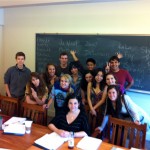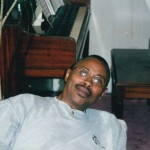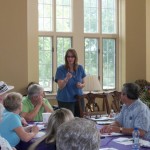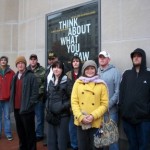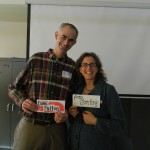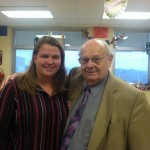Resonances, Democratic Pedagogies, & Hope
Forums › 2023 Summer Seminar › Becoming a Holocaust Educator 2023 Summer Seminar Responses: due JUNE 18 (or earlier) › Resonances, Democratic Pedagogies, & Hope
-
AuthorPosts
-
-
June 11, 2023 at 3:26 pm #31816
I resonated with multiple pieces in Becoming a Holocaust Educator. I connected with Brenda Johnston’s transformational journey with Montana Writing Project. MWP was where I found my people, other teachers motivated to push for student inquiry and the important role of writing in inquiry. My participation in MWP has led me to help establish a new Writing Project site (Elk River Writing Project) and to facilitate multiple summer institutes. Writing Project and Worlds Apart helped to give me the tools to genuinely implement Indian Education for All. Like Brenda, “I believe that educators need to respect the culture of their students and to celebrate the beauty in it” (35). WP and TOLI continue to help me grow on this path and towards this goal.
Wendy Warren’s chapter “Teaching for Humanity” reminded me of the power of classroom community. I had a standard 3-year-cycle evaluation from admin this year. It did not happen until very late in the year (end of April). Leading up to this evaluation, I reflected that my admin was not going to see all of the work that goes into establishing a classroom community, to fostering student inquiry, to building a culture of trust, to see, as Warren says, “a classroom community where every person is valued, and all voices are heard” (103). He was able to observe my students in engaging conversations and willing to take risks and willing to be wrong. When he asked me why my students were willing to do that, I did not have an easy/quick answer. Their willingness to fail, to be wrong, to engage in a conversation is the culmination of months of work establishing a classroom centered in inquiry and trust. And, as Warren writes, “Transformative teaching and learning are…neither quick or easy” (106).
The final chapter I read, Michelle Sadrena Pledger’s “Avenues for Authentic Action” resonated with the need for “authentic learning, authentic assessment, and even authentic action” (141). I love the projects she details in this chapter; the culmination of her projects push me. I agree that students need authentic audiences. How can I do more of this in my classes? How can I put student work into our community?
Much of what I read brought me back to Perl’s line in On Austrian Soil: “I see the possibilities inherent in teaching. It lets me grasp more fully what it means to embody a pedagogy based on hope” (97). At the end of the day, Holocaust education, for me, is about hope and doing good in the world. I am hopeful that teachers can help change the world.
-
June 12, 2023 at 12:47 pm #31819
Amen Bridgett. I share Wendy’s chapter with you and agrre that school and classroom community building are essential to fully “SEE” all students in our classrooms. I suspect most of the time as educators, we are focused on our students “doing school”, when infact they have other priorities outside the classroom. Undestnading who we are as well as understading our students lived experiences is what a “pedagogy of empathy” looks like. I hope we can learn from it and help administrators understand the totally of what students bring to school.
-
-
AuthorPosts
- You must be logged in to reply to this topic.
Recent Replies
Recently Active
-
Active 16 hours, 23 minutes ago
-
Active 20 hours, 8 minutes ago
-
Active 1 day, 17 hours ago
-
Active 2 days, 11 hours ago
-
Active 2 days, 17 hours ago
- View All Members

